Do a Google image search on the words “oil sands canada,” and you end up with the kind of images that many Canadians might already have in mind when they try to picture that industry—namely, images of a mining-style operation, with wide expanses of dark earth being scraped and stripped, carved and crushed by giant trucks and diggers.
But to people living on the Southeast Side of Chicago in recent years, those same words can conjure quite a different picture—namely, of a diffuse and toxic black dust that, when not piled in five-storey-high mounds along the banks of the Calumet River, might blow onto their lawns, sidewalks and homes, permeating their domestic spaces and fragile lungs.
The name of this “dust” is petcoke, and it’s a major byproduct of oil-sands processing. It’s also the subject of an art exhibition called “Petcoke: Tracing Dirty Energy” organized by the city’s Museum of Contemporary Photography, and that is currently on view at three Southeast Chicago venues.
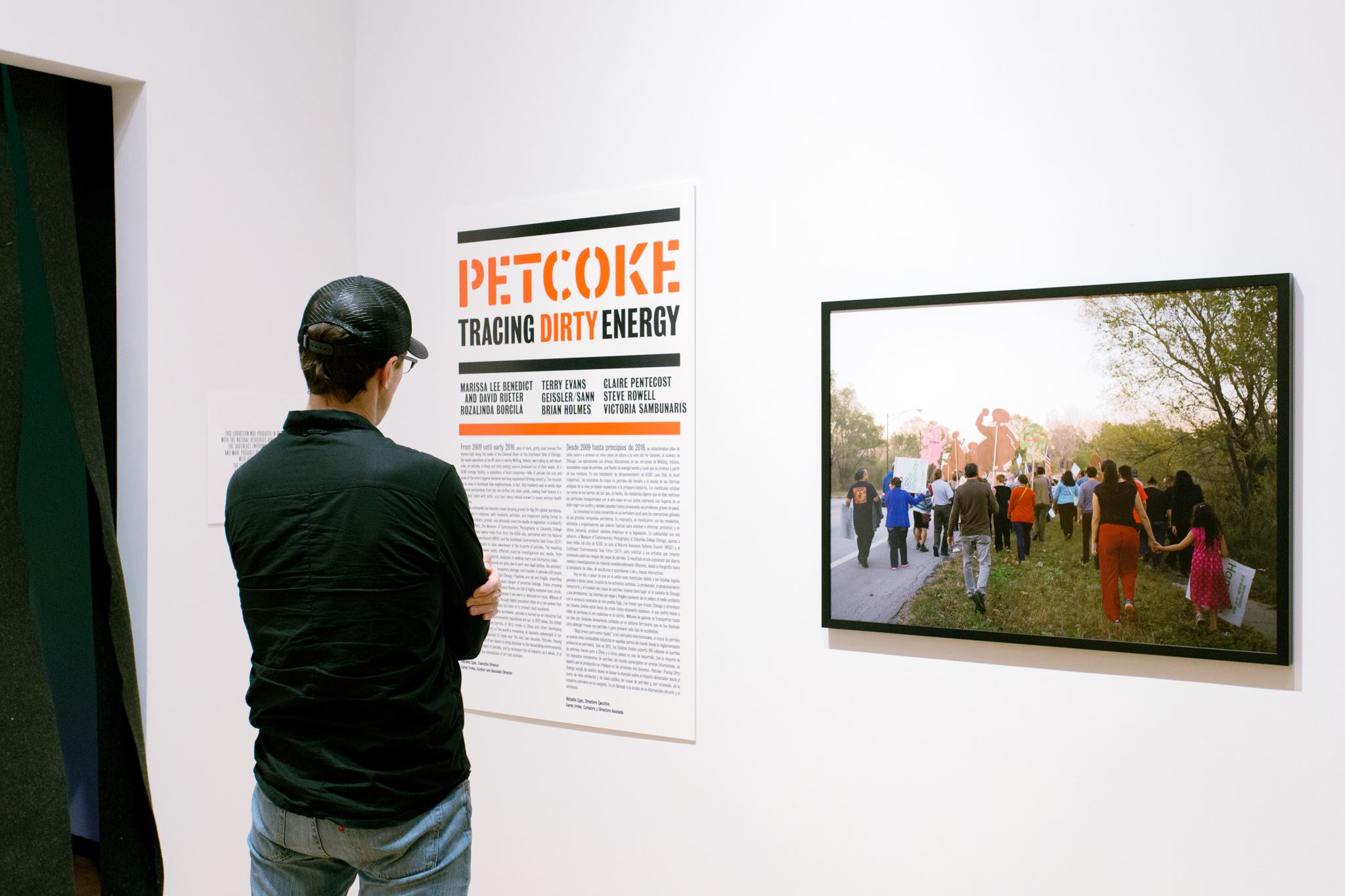 A visitor reads the wall text for “Petcoke: Tracing Dirty Energy,” an exhibition about a byproduct of oil sands production and related phenomena, organized by the Museum of Contemporary Photography in Chicago. Photo: via MoCP Facebook page.
A visitor reads the wall text for “Petcoke: Tracing Dirty Energy,” an exhibition about a byproduct of oil sands production and related phenomena, organized by the Museum of Contemporary Photography in Chicago. Photo: via MoCP Facebook page.
The impacts of Canada’s oil-sands industry, and its petcoke byproduct, “manifest in different ways that affect different communities” says Marissa Lee Benedict, an American artist who, with David Rueter, produced I Can Only See Shadows, a video installation about dust (petcoke and otherwise) for the exhibition.
“We wanted to call attention to the difficulty of putting a nice conceptual frame around something that is hard to hold,” says artist David Rueter about that video installation. “There is a problem of containment with dust, and we thought that was a really good analogy to the difficulty of containing a corporation.”
Indeed, petcoke dust and its effects—as well as its corporate profits—stretch all the way to China, where the bulk of US-manufactured petcoke is sold as an industrial fuel. Petcoke, according to Places Journal, also emits more carbon dioxide than any other energy source, including coal, meaning its climate-change impacts stretch even further around the globe.
As a result, Rueter and Benedict travelled from Alberta to the Gobi Desert to make their video, which contrasts “a very liquid financial world” with a “fallout that is more dried out and fractured in some way,” says Rueter.
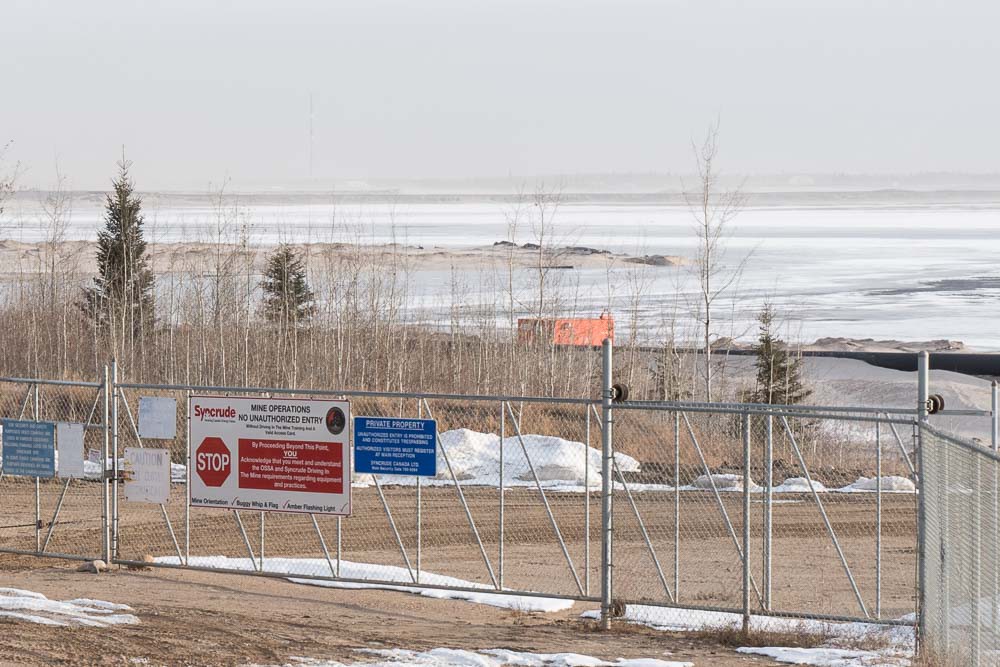 An active Syncrude mine and tailings pond near Mildred Lake, Alberta, shot by Steve Rowell as part of the process for his film Midstream at Twilight, March 2016. Courtesy of the artist.
An active Syncrude mine and tailings pond near Mildred Lake, Alberta, shot by Steve Rowell as part of the process for his film Midstream at Twilight, March 2016. Courtesy of the artist.
American artist Steve Rowell—long associated with Los Angeles’ Center for Land Use Interpretation, and its practices around mapping—also travelled widely to make his artwork for the exhibition. Titled Midstream at Twilight, Rowell’s video installation presents images of his attempts to map the path of oil sands from Northern Alberta to Chicago’s South Side to the port of Los Angeles, where much petcoke is shipped overseas.
“I wanted to pursue this linear mapping of the pipeline, but also this the way that it spreads out through the landscape,” Rowell says. “Once the petcoke is created as a byproduct, once it leaves that site [in Chicago], they actually don’t want people to know where it goes. I lost track in Kentucky and didn’t really pick it up again until the port of Los Angeles.”
Rowell, in part, used drones to take photographs and footage for his video installation, shooting from the shoulders of roadways and highways—technically public land—as well as from graveyards, which generally have public air rights.
“There are some very approximate [pipeline] maps on the Internet,” says Rowell of learning how to track the pipelines’ paths. “But up to a certain point they don’t want you to know where the pipelines are, because it is critical infrastructure. So it was matter of eyeballing satellite imagery—you can see years later where things are buried because of disturbances in the coloration of the ground.” He was also guided by warning markers on the ground placed where pipelines cross roadways.
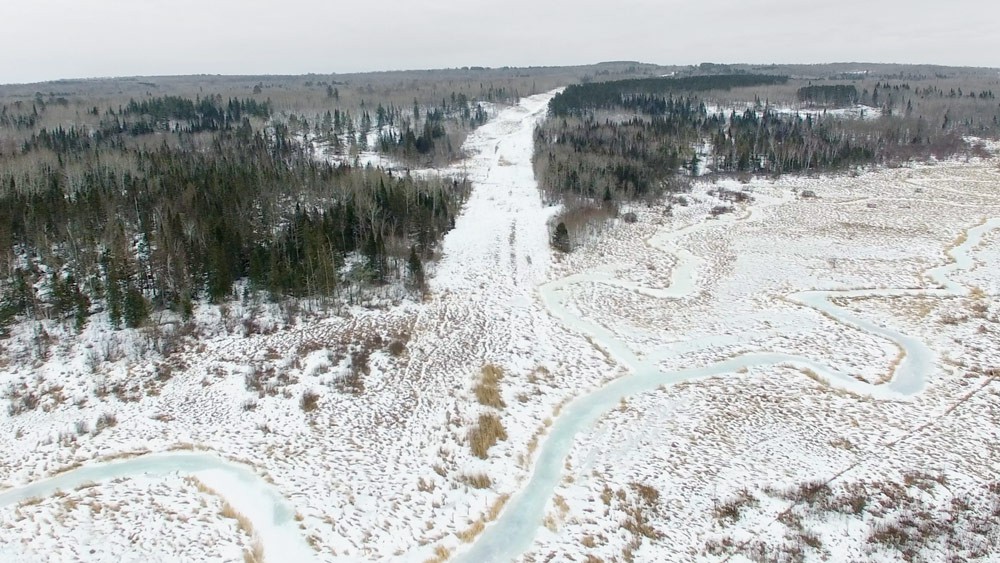 For his film Midstream at Twilight, Steve Rowell shot this aerial dronecam perspective of the Flint Hills Resources MINNCAN oil pipeline as it cut across the Mississippi River headwaters in northern Minnesota, between the White Earth and Leech Lake Indian Reservations. Rowell was trying to trace a pipeline that carries upgraded bitumen from the tar sands in Alberta to the Flint Hills Pine Bend Oil Refinery near the Twin Cities, Minnesota, and beyond. Courtesy of the artist.
For his film Midstream at Twilight, Steve Rowell shot this aerial dronecam perspective of the Flint Hills Resources MINNCAN oil pipeline as it cut across the Mississippi River headwaters in northern Minnesota, between the White Earth and Leech Lake Indian Reservations. Rowell was trying to trace a pipeline that carries upgraded bitumen from the tar sands in Alberta to the Flint Hills Pine Bend Oil Refinery near the Twin Cities, Minnesota, and beyond. Courtesy of the artist.
Rowell, who is currently completing a degree at the Ruskin School of Art at Oxford, with research connected to the Future of Humanity Institute, says he realizes the ways he is implicated with the oil industry, too. He grew up in Houston, at the “heart of the oil industry in the US,” and says he has many relatives for whom that industry means jobs.
But that the same time, Rowell hopes his video Midstream at Twilight—about the “midstream” section of the oil process—marks part of a death knell or “twilight” for oil, and the climate change it has wrought.
“I see the work as a creative curse against the industry,” Rowell says. “I have put my cards on the table, once and for all—I have been dancing around this subject for many years.”
To create “Petcoke: Tracing Dirty Energy,” the Museum of Contemporary Photography in Chicago worked closely with the Natural Resource Defense Council and the Southeast Environmental Task Force, coming up with a premise for the exhibition before it approached artists for new commissions on the topic.
As a first step in the creation process in 2015, the MoCP and the NRDC took the artists—eight artists or artist teams in all, most from the U.S. but one from Germany, too—on a bus tour of the Southeast Side of Chicago, so they could see the petcoke themselves. Then the artist group met bimonthly over the course of a year (sometimes with local activists, too) while they were developing their works.
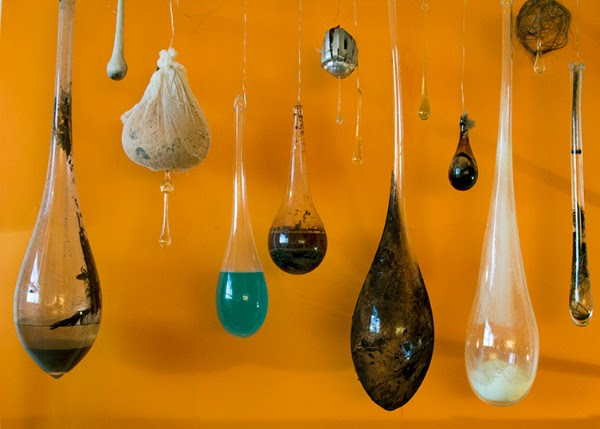 For her contribution to “Petcoke: Tracing Dirty Energy” in Chicago, American artist Claire Pentecost created A Library of Tears (2016)—an installation of tear-shaped glass vessels containing, among other things, oil sands culled from Canada. Photo: Museum of Contemporary Photography, Chicago.
For her contribution to “Petcoke: Tracing Dirty Energy” in Chicago, American artist Claire Pentecost created A Library of Tears (2016)—an installation of tear-shaped glass vessels containing, among other things, oil sands culled from Canada. Photo: Museum of Contemporary Photography, Chicago.
The original “Petcoke: Tracing Dirty Energy” exhibition was up at the Museum of Contemporary Photography in Chicago from July to October 2016, and then was moved this spring to community venues in the area most affected by petcoke in the city: a YMCA, public library and youth arts organization on the Southeast Side of Chicago.
“I think it was really powerful for activists in Chicago to see their problem is not just their problem,” says artist Marissa Lee Benedict of the process and the resulting exhibition. “It’s actually everyone’s problem.”
Though legislation, in 2016, forced corporations involved with Chicago petcoke to move those mountains of toxic, heavy-metal-laden dust indoors, millions of tonnes of petcoke still flow through Chicago—and other cities—by rail each year. And as the exhibition essay notes, more than two trillion barrels of the world’s oil deposits are still submerged in oil sands.
The urgency of this exhibition, then, remains undiminished.
“After doing many projects on oil, I have some guarded optimism that the industry is in decline—it is wishful thinking, but realistic wishful thinking,” says artist Steve Rowell. “For the good of all things living on this planet, that industry needs to die at some point.”
This article was corrected on May 18, 2017. The original erroneously stated that Steve Rowell is completing a degree at the Future of Humanity Institute in Oxford. We regret the error.

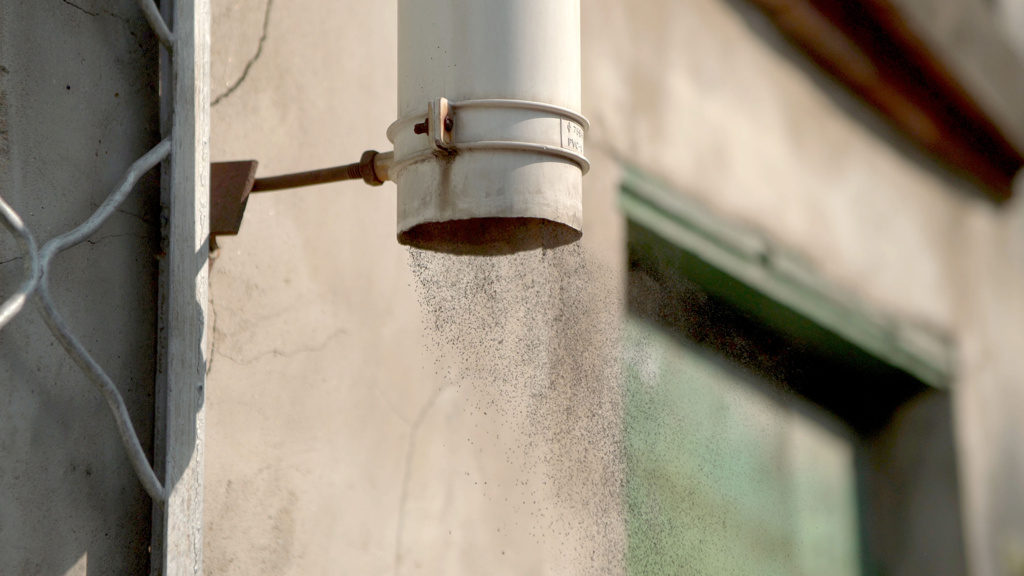 American artists Marissa Lee Benedict and David Rueter focused on the pervasive, dusty quality of petcoke in their video installation I Can Only See Shadows, which took them from Alberta to the Gobi Desert. This is a video still from the installation. Image: Courtesy the artists.
American artists Marissa Lee Benedict and David Rueter focused on the pervasive, dusty quality of petcoke in their video installation I Can Only See Shadows, which took them from Alberta to the Gobi Desert. This is a video still from the installation. Image: Courtesy the artists.







